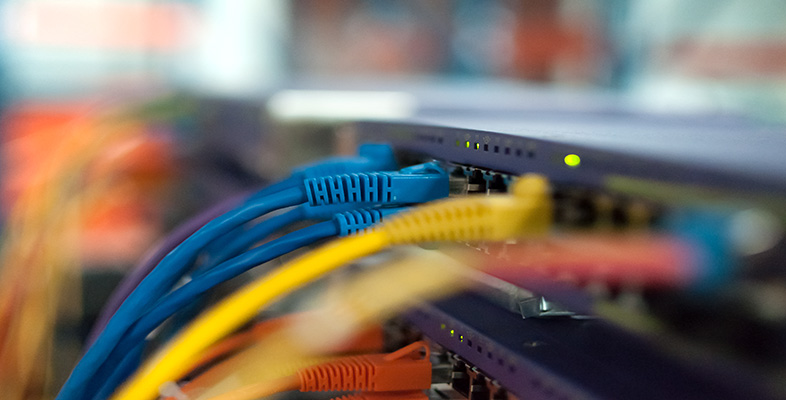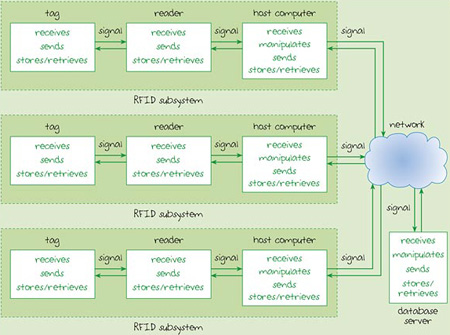7.3 RFID technology
There are three main components in an RFID system:
-
A tag (consisting of electronic circuitry and an antenna), which acts as a data store and wireless transponder. (A transponder is a device that automatically sends a signal in response to interrogation from another device.)
-
A reader (consisting of electronic circuitry and an antenna), which acts as a controller unit and transceiver. (In Section 2 you were introduced to the term 'transceiver' – a device that transmits and receives signals.)
-
A host computer system that processes and manages the information it receives from the reader.
Figure 18 illustrates the relationship between these components.
A reader can interrogate multiple tags and send the data from each to a host computer, which in turn could be connected through a network to other computers in an RFID system (Figure 19). In this way, the data from a tag on an item could be recorded as it travels from the manufacturer, to the warehouse, through the distribution and transport networks, to the retailer, to the point-of-sale terminal and even beyond. The data could be stored on a central database to provide a complete history of the item.


